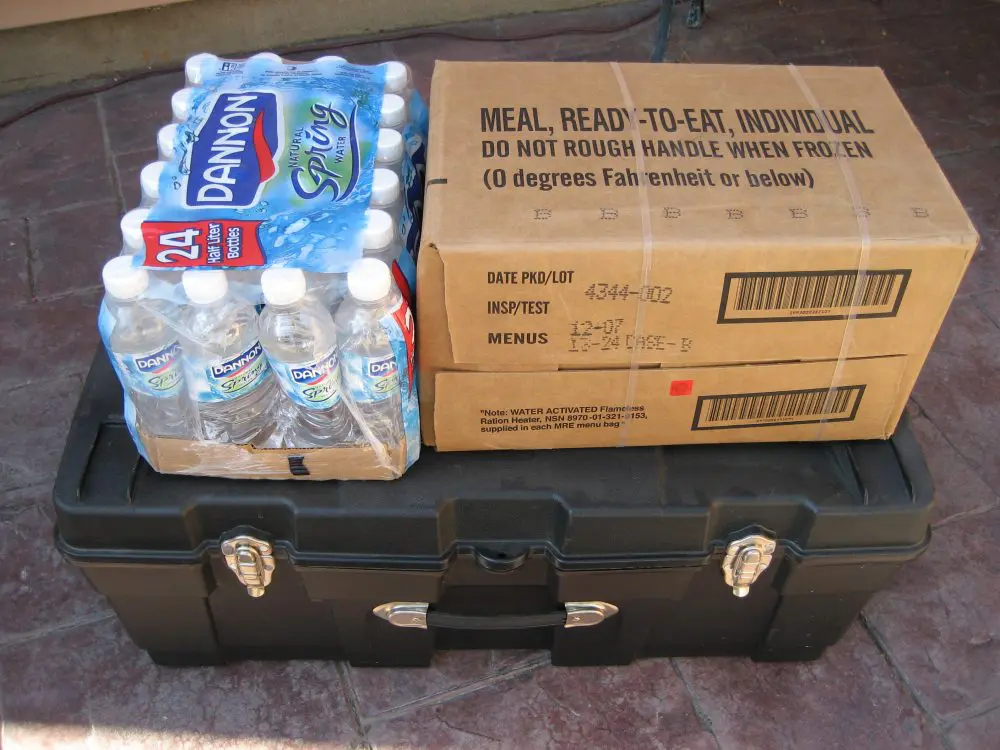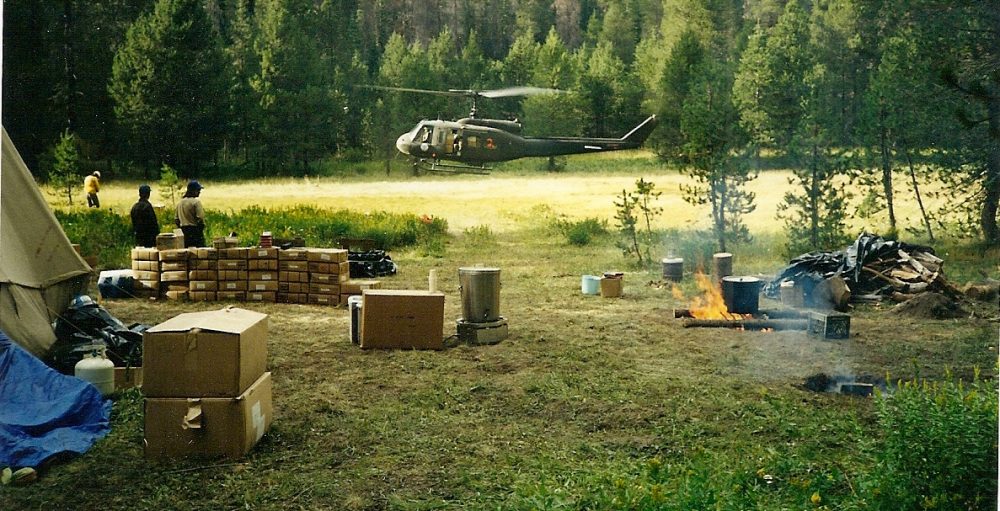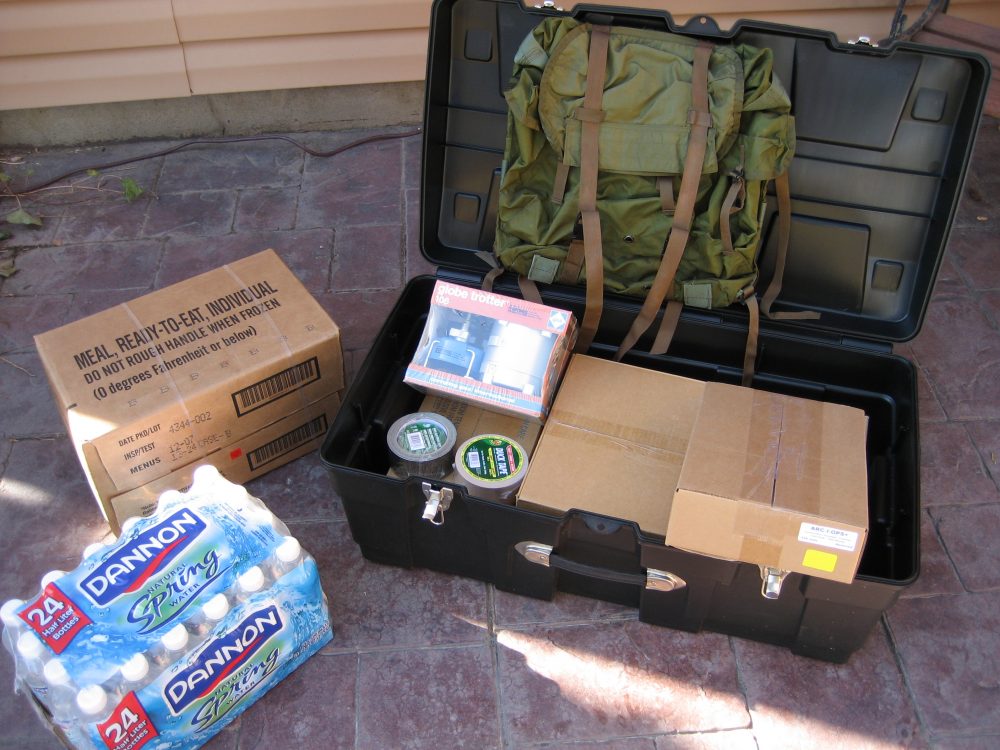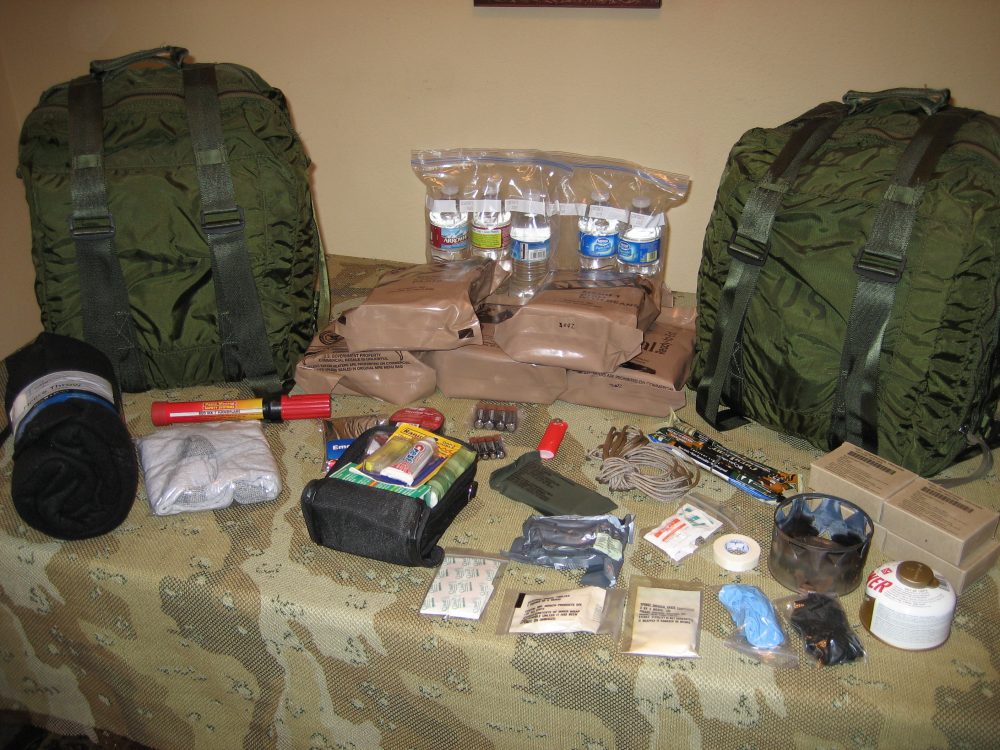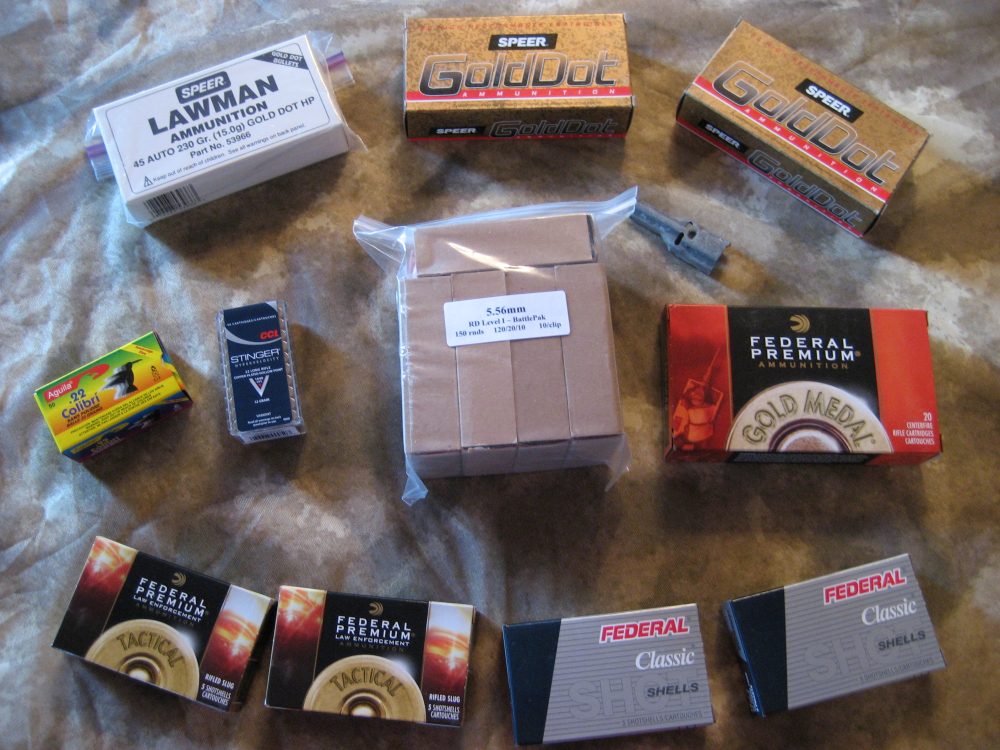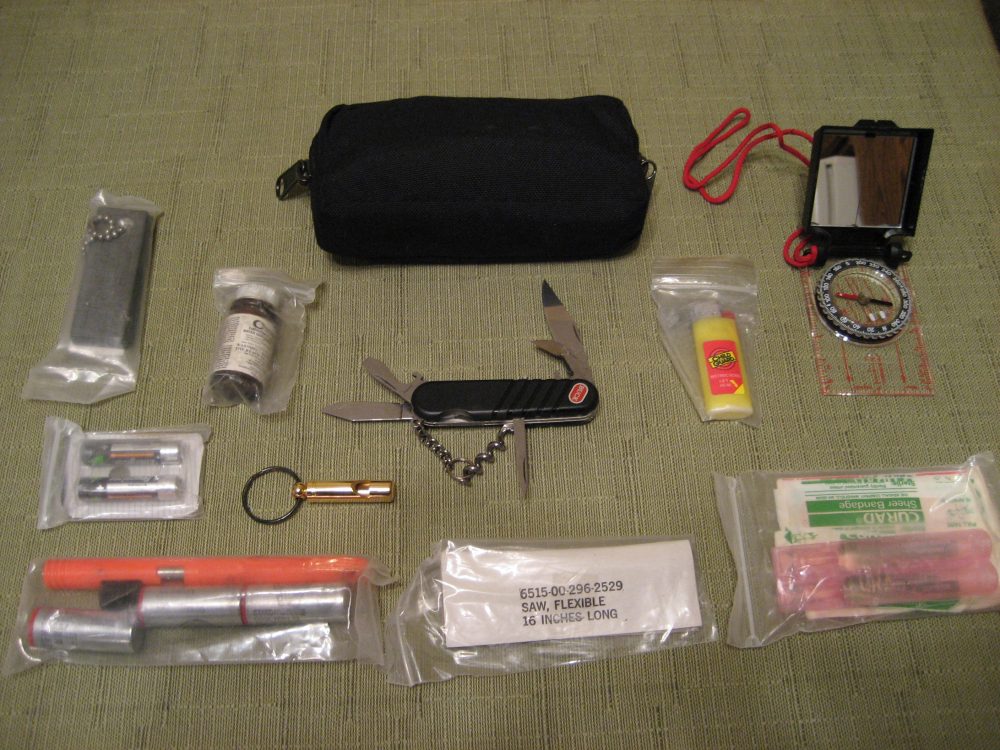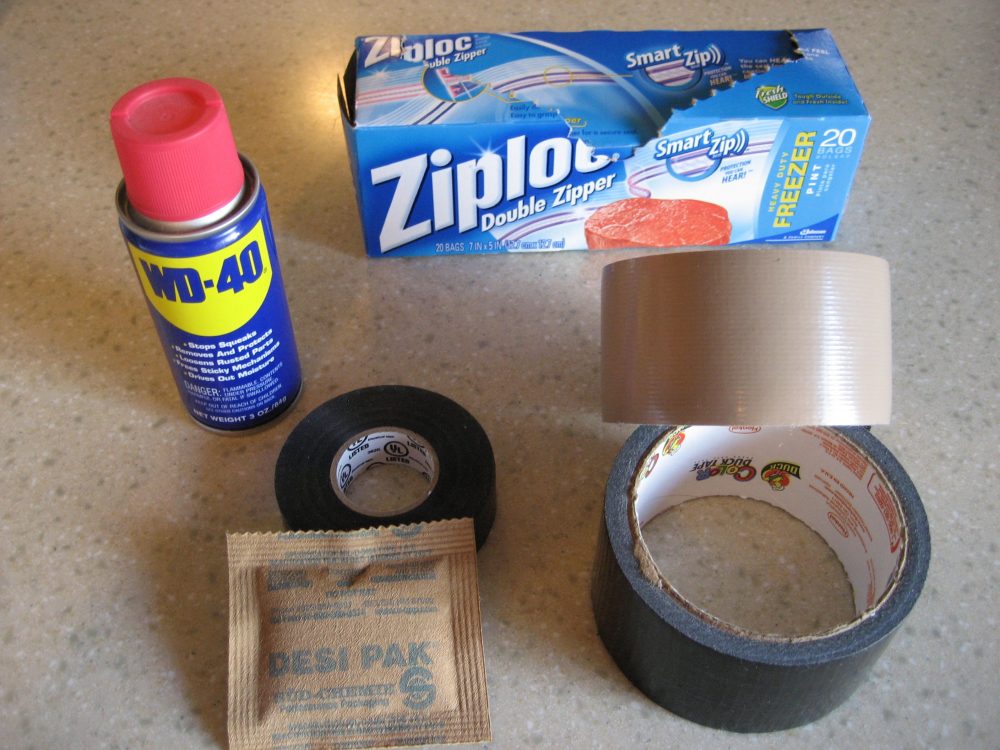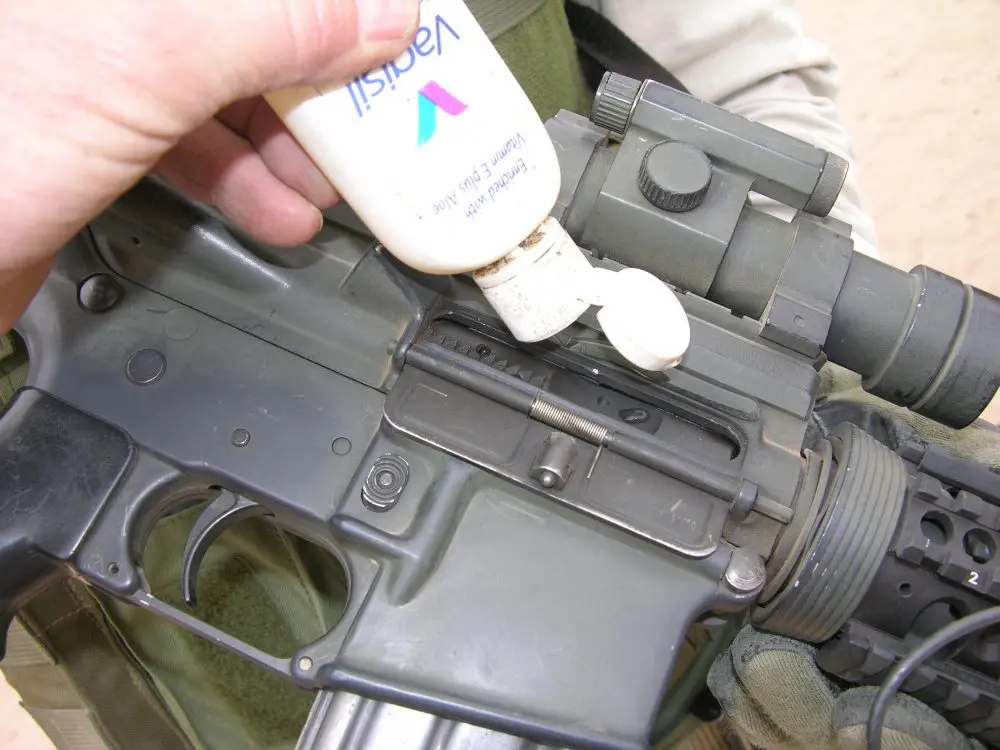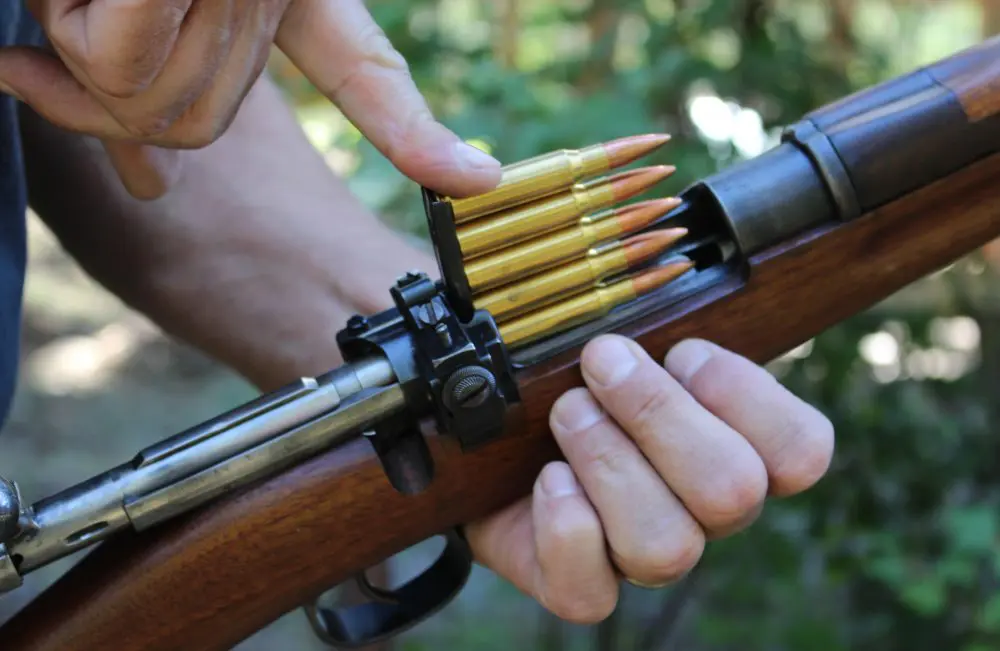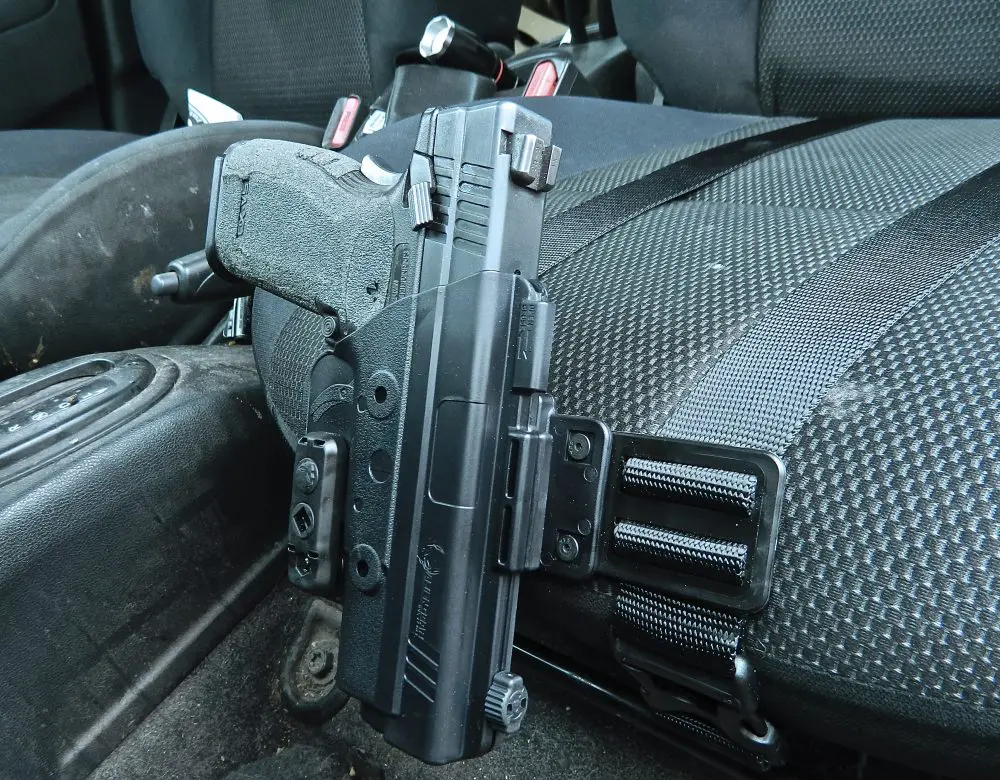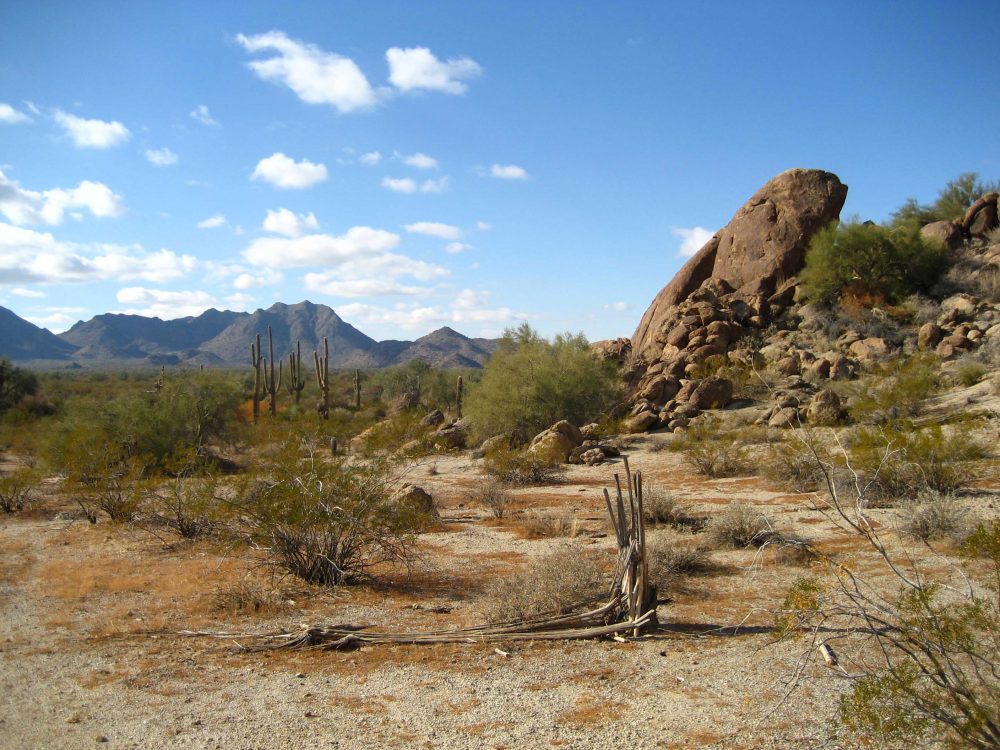Cache (Kash), noun
1. A hidden store of provisions, weapons, treasure, etc.
2. The place where such a store is hidden.
In my 26 years of public service, I’ve noticed that most “victims” had little clue they were going to be involved in a life-changing event. Whether an automobile accident, natural disaster, or violent crime, most folks walk around “fat, dumb, and happy,” with scant awareness of their surroundings and often no preparedness for an untoward event.
Spike camp resupply. A serious cache of provisions! (Yosemite Fires, 1990)
Table of Contents
“TWO IS ONE … ONE IS NONE”
In most cases, having spares of critical survival items is wise, and any individual or family emergency plan is better than no plan. Having an emergency preparedness plan and a grab-and-go pack or 72-hour emergency kit are strong steps in the right direction for disaster planning, but when you’re across town or “over-the-river-and-through-the-woods” at Grandma’s house, what then?
In the early days of our country, mountain men, trappers and explorers knew the benefit of having several caches of provisions strategically located around the region that they frequented. When frontiersmen found themselves in dire straits, they would head for a cache site to access the powder, ball and hardtack that would keep them alive and supply them with the necessities as they continued on their way.
Certainly we should always have some basic preparedness items with us wherever we go. And a well thought-out vehicle kit can be extremely useful. But stocking a few locations with spares of critical and potentially life-saving survival equipment is also a wise course of action.
Eight cubic feet of Save Your Butt
SITE LOCATION AND SELECTION
Cache site selection should be based on several factors, and some sites may be stocked more heavily than others. Factors to consider include level of support anticipated (whether family, friends or government), regions of the country you frequent and are most likely to be in or traveling to in the event of an emergency, and the security of your supplies once the cache is established. One recommendation is to have a cache in each cardinal direction of the compass, so you’ll have resources available regionally no matter which direction you find yourself in.
Many suggest beginning with cache locations where family and close friends reside. In an emergency, that is likely where we would want to be, so having supplies stashed in these locations makes sense. If I’m asking for a couple of square feet of floor space in a garage, spare bedroom or attic, my cache containers can be relatively inexpensive and low-key.
I’ve found that the plastic footlockers from big-box stores work adequately and are available for about $20. These have a reasonably strong hinge, can be locked and, with some 100-mph tape, can be sealed from minor water/dust/bug intrusion. Depending on the amount of space you have available at the cache site and the potential scenario you’re providing resupply for, one or two of these can contain a significant amount of critical survival items.
If my cache site will be more exposed to the elements, I will select a container with air- and water-tight capabilities. I’ve found that military surplus aluminum medical supply containers are excellent for this task. Pelican and Hardigg cases are also great storage containers, though their cost may be prohibitive if you’re on a tight budget. Yet another alternative is large-diameter PVC pipe with tight-fitting lids. Paraffin can be melted around the joints where the caps attach to make them even more resisitant to water and air.
Food, water, stove, fuel, medicine, and ammo
BURIAL
Some preparedness and survival experts recommend burial of your emergency supplies. If you believe this is a viable option for one or more of your cache sites, you need air- and water-tight containers, desiccant to keep unwanted moisture and condensation controlled, and the ability to disguise your site to keep it safe from inquisitive humans and animals.
Having solid GPS and compass locations mapped and documented for each cache site is a fundamental requirement. Nothing is worse than having a great stockpile that you are unable to find due to poor navigation skills. If you choose to go this route, remember that electronic devices can fail, manmade (and some natural) landmarks can shift, move, or be altered, and seasonal changes in vegetation and terrain appearance and accessibility can make finding that “special place” difficult. The bottom line on buried cache sites: nothing beats solid map and compass skills for retracing your steps to your buried treasure.
Cache of supplies in surplus equipment bag—1.8 cubic feet, 20 pounds
POWDER, BALL AND HARDTACK
Now that we’ve selected our cache sites, what do we stock them with? While it would be ideal to have exact duplicates of all our supplies at each location, most of us will have financial and other logistical constraints that prevent total duplication. Other factors to consider when determining cache supplies include regional climate and weather, urban vs. rural locale, portability, terrain, and local support systems.
My cache lists include the basics of food, clothing, and shelter, but also go a step or two further to include medical supplies, stove and fuel, and ammunition. While basic supplies may be as simple as a few candy bars, a rain jacket and a space blanket, I like to go a little deeper on the consumable items for a longer term of support.
Cache supply lists may be different for different locations and regional levels of support. For instance, if a cache site is located at a friend or family member’s home, it may be wise to include additional supplies to lend support to their needs.
Considerations for supply safety and cross-contamination should be addressed if any toxic or potentially dangerous substances are being stored. Some supplies should be kept apart from others, and proper storage and safety practices should be observed.
Consider multiple calibers for ammo storage.
PORTABILITY
I consider the potential method of transportation when I pack my cache sites. During my 15 years of air-medical service, my daily emergency preparedness cache was in my flight suit pocket on my left calf—the pinnacle of portability. True, this was a small cache of supplies, but very accessible and comforting as we flew over terrain that varied from 10,000-foot high mountains to snowbound backcountry forests and 100+ degree barren deserts.
Stowing a backpack or surplus duffel bag with shoulder straps in the cache gives the option of going mobile with the emergency items. However, if you’re anticipating vehicular access, you may include heavier items that would not be appropriate if the situation required items to be man-portable.
SITE SECURITY
If your cache site is in a location that has a potentially high level of traffic (foot or mobile) or is in close proximity to public places, consider how secure your supplies will be. A few of my cache sites are at the homes of family members who live outside my immediate location and are a good distance from major cities. I’m less concerned about site integrity there than at sites with less oversight and more public accessibility.
If your rural cache site security risk is nothing more than rust and raccoons, you can deal with those issues with container selection and moisture inhibitors. Regardless of perceived security risks, it is advisable to keep your site under observation and be aware of your surroundings and any indications of site compromise prior to accessing your supplies in an emergency.
Flight suit kit: ultimate portability
SUPPLY ROTATION
Many items, if stored correctly, will last for years. A simple rotation schedule will keep the less durable goods fresh for use. Batteries, fuel, food, tools, ammunition and medicine all require varied levels of preparation and rotation to keep viable. The good news is that there is reliable information on equipment and supply storage for every item you might stash. Read up on the specific items you store to ensure that they will be in functional condition when your life may depend on them. Fuel stabilizers, machine oil, and zip-lock type storage bags are your friends.
A rotation log for perishable items (batteries, food, medicine, etc) should be kept and referenced frequently to ensure that you are staying up on rotation dates. Constant rotation of consumables and perishable items is advised. Another positive aspect of supply rotation is the familiarity you and your family will get by physically handling the sites, storage containers, and supplies during the rotation process.
Everyone should be capable of accessing and resecuring the container and site. While the rotation of supplies is somewhat of a nuisance, the comfort that comes from knowing cache sites are stocked with fresh supplies is worth the hassle.
Cache preparation supplies. Oil it, seal it, secure it!
SAMPLE CACHE LIST
Food/water
Clothing
Shelter
Medicine
Tools/weapons
Ammunition
Navigation tools
Stove/fuel
Miscellaneous
Cash/coin/card
CONCLUSION
From the simpler days, when each frontier trapper had caches of beans, bullets and jerky stashed throughout the region, to the current time with our fast-paced lives, a little preparedness with a few caches of supplies has—and still can—mean the difference between a good outcome and a devastating end.
Whether your cache is a single shoebox-sized container or a fully stocked cabin in the mountains, remember the peace of mind that having a plan and a few supplies can give, and don’t forget the old adage: “An ounce of prevention is worth a pound of cure!”
Currently a SWAT team member with a Utah police department, Ken Matthews has collateral responsibilities as a sniper and team medic. He has been an underground miner, EMT and ambulance commander, and a flight nurse and air-medical program director with over 1,000 patient missions.
